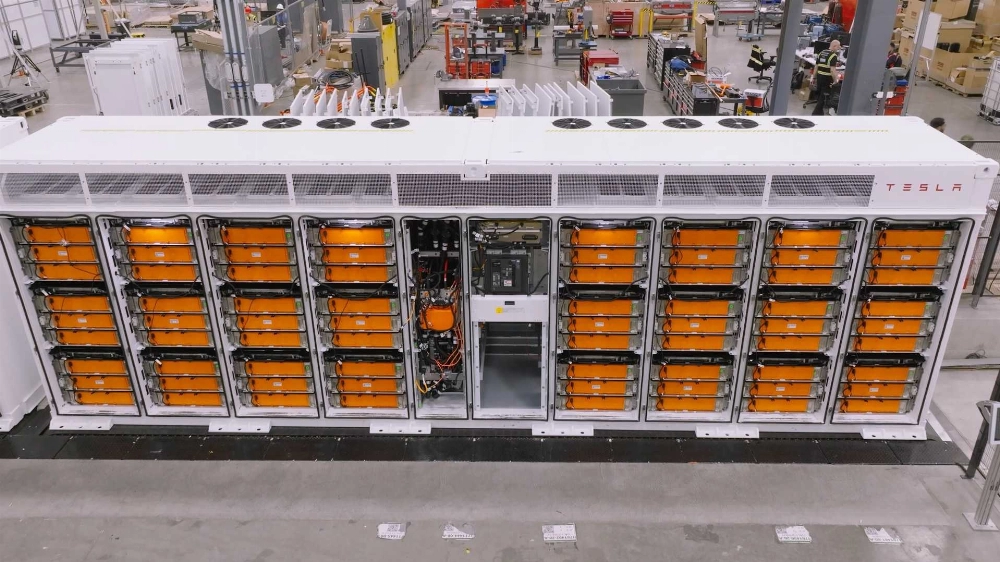Batteries are the core power source for various electronic devices, from smartphones and laptops to electric vehicles that are reshaping the transportation industry. To efficiently maintain, repair, and optimize these power systems, we must have a firm grasp of the key components that make up a battery – individual battery cells, modules, and larger battery packs.

In this guide, we will explore the distinctions between battery cells, modules, and packs. Whether you are an electronics enthusiast, a technician repairing electric vehicles, or simply curious about the energy systems that power everyday devices, this article will provide you with the knowledge to better understand these fundamental battery elements.
Part 1: What is a Battery Cell?
The typical structure of a lithium battery consists of battery cells, battery modules, and battery packs. Battery cell technology is the foundation of these systems. Grouping lithium battery cells together is referred to as a “PACK,” which can consist of a single battery cell or multiple battery modules in series/parallel.
A battery cell is the most basic unit of a battery. It is typically housed in a metal casing and stores and releases electrical energy by converting chemical energy through electrochemical reactions. A battery cell typically includes a positive electrode, a negative electrode, a separator, and an electrolyte.
Key Components of a Battery Cell:
- Positive and Negative Electrodes: The positive and negative electrodes are the two terminals of a battery cell, separated by a separator. These electrodes contain active materials where chemical reactions occur. If classified by positive electrode material, batteries can be divided into NMC (Nickel Manganese Cobalt) lithium batteries, lithium iron phosphate batteries, and other types.
- Separator: This ion-permeable membrane prevents direct contact between the positive and negative electrodes while allowing ions to flow between them.
- Electrolyte: This liquid or solid medium facilitates the movement of ions within the cell, enabling electrochemical reactions.
Different types of battery cells vary in structure due to their applications and chemical properties. Common battery types include lithium-ion batteries, nickel-metal hydride batteries, and lead-acid batteries. The performance and characteristics of a battery directly affect its capacity, voltage, cycle life, and safety.
Part 2: What is a Battery Module?
A battery module is an assembly composed of multiple battery cells, designed to provide higher voltage and capacity. It is an integral part of a battery system and typically includes multiple battery cells, connectors, a battery management system (BMS), and a protective enclosure.
How Battery Cells Form Modules:
Battery modules are created by arranging multiple battery cells in series and/or parallel configurations to achieve the desired voltage and capacity. When battery cells are connected in series, their voltages are additive. When connected in parallel, the total capacity is the sum of the individual cell capacities, increasing the overall energy capacity.
The design and structure of battery modules can be customized to accommodate various space configurations and application needs.
What is a Battery Management System (BMS)?
A crucial component of a battery module is the Battery Management System (BMS). This system monitors and manages the charging and discharging processes of the battery, ensuring optimal performance and safety. The BMS is essential for balancing battery cells, preventing overcharging and over-discharging, and protecting the battery cell from potential damage.
Understanding the role of each component, from individual battery cells to complete modules, is essential for using and optimizing modern battery systems. Whether in consumer electronics or electric vehicles, these building blocks are key to maximizing the performance and lifespan of battery-powered systems.
KHZH provides cutting-edge insights and solutions in battery technology, giving you the tools you need to effectively understand and use modern battery systems. To learn more about optimizing your battery systems, check out our How to Pick Best Battery for Screwdriver: A Comprehensive Guide.
Part 2: What is a Battery Module?
A battery module is an essential component composed of multiple battery cells, designed to enhance energy storage and system performance. Battery modules are the core building blocks for creating battery packs and are equipped with their own Battery Management System (BMS) to monitor and manage critical parameters like voltage, temperature, current, and overall battery health.
Key Features of Battery Modules:
- Battery Management System (BMS): The BMS ensures that the battery operates within safe limits by monitoring critical parameters such as cell voltage, temperature, and current. It also performs state estimation and balancing control to prevent overcharging, over-discharging, and excessive temperature rise, thus ensuring stable performance.
- Protective Housing: Battery modules are typically enclosed in protective housings to safeguard the battery cells and BMS from external damage. These housings also help with heat dissipation and provide physical support.
- Customizable Design: Battery module designs are flexible and can be customized to meet various specifications, including size, shape, capacity, and functionality. This customization enhances the reliability and energy density of the battery cells, and it simplifies the assembly and management of battery packs.
- Three-Level Assembly Model: In traditional battery pack manufacturing, lithium battery cells are first assembled into modules, which are then assembled into battery packs, forming a hierarchical system: Lithium Battery Cell → Battery Module → Battery Pack.
Part 3: What is a Battery Pack?
A battery pack is an integrated system consisting of multiple battery modules. It serves as the primary energy storage unit in many applications, providing power to external systems.
Structure of a Battery Pack:
A battery pack typically consists of the following parts:
- Battery Modules: Multiple modules connected in parallel or series to increase capacity and voltage.
- Connectors: They are used for electrical connections between modules and external systems.
- Battery Management System (BMS): The BMS manages and monitors the entire battery system.
- Cooling System: This system ensures that the battery pack maintains an optimal temperature for safe operation.
- Housing: A protective enclosure that safeguards the internal components and ensures structural integrity.
How Battery Modules Form a Battery Pack:
Battery packs integrate multiple modules in series or parallel to enhance overall voltage, capacity, and power. In addition to energy storage, battery packs must support other functions, such as providing electrical interfaces, controlling temperature through cooling systems, and offering physical protection.
Battery Pack BMS:
Similar to the module level, the battery pack also includes a BMS to oversee and control the entire system. It ensures proper charging and discharging processes, monitors health status, and maintains safety and balance, thereby contributing to the overall reliability of the battery pack.
Battery packs also feature a cooling system to manage temperature. Effective heat dissipation prevents the pack from overheating, ensuring it operates within safe limits.
Applications of Battery Packs:
Battery packs are widely used in various applications that require high capacity and voltage, such as electric vehicles, hybrid vehicles, and energy storage systems. They are a crucial component in modern energy storage solutions, providing substantial electrical energy storage and management capabilities for various applications.
Part 4: Differentiating Between Battery Cells, Modules, and Packs
While the term “battery” is widely used, battery cells, modules, and packs represent different stages in the battery assembly process. To effectively manage battery cells within a battery pack, they are first organized into modules, and then these modules are combined into a complete battery pack.
Differences Between Battery Cells, Modules, and Packs:
- Battery Cell: The basic unit of a battery system, responsible for storing and releasing electrochemical energy.
- Battery Module: A group of organized and managed battery cells, designed to enhance performance, capacity, and safety.
- Battery Pack: A complete assembly of multiple modules, working together to provide energy storage for large-scale applications.

1. Battery Cell
The battery cell is the basic unit of a power battery system, serving as an energy storage component. Battery cells must have high energy density to store the maximum amount of electrical energy. In addition, the lifespan of the battery cell is crucial to overall performance. A single damaged battery cell can affect the entire battery pack.
2. Battery Module
When multiple battery cells are combined into a single housing frame and externally connected through a shared interface, they form a battery module. The battery module serves as an intermediate unit, integrating multiple battery cells to better manage and improve performance.
3. Battery Pack
The battery pack is an energy storage unit composed of multiple battery modules, managed by a Battery Management System (BMS) and a Thermal Management System. These systems collectively control the battery pack, ensuring efficient and safe operation. The battery pack can be seen as a larger, more complex energy storage system that simplifies battery module installation, connection, and management. It also provides necessary protection, monitoring, and thermal regulation functions. Equipped with a BMS, the battery pack enhances the safety of the battery system while managing the battery’s temperature and its operating environment, thereby optimizing the performance range of lithium-ion batteries.
4. Summary
Lithium battery systems are generally structured in a hierarchy: Battery Cell → Battery Module → Battery Pack. Battery cell technology is the cornerstone of any battery system. The process of assembling multiple battery cells into a battery pack is called the “PACK” process, which may include single or multiple modules connected in series and/or parallel.
The entire manufacturing process from a single battery cell to a complete battery pack is very complex and involves multiple stages. As a leading professional company in the field of lithium battery manufacturing, KHZH has extensive experience in battery research, development, production, and packaging. KHZH provides customized lithium battery solutions to meet a wide range of application needs.
Related Topics:
- Battery Array vs. Single Battery: Which is Best for Your Power Needs?
Understand the advantages, differences, and performance factors of battery arrays versus single batteries to gain the best energy solution. - What is a Battery Array?
Explore the concept of battery arrays, how they work, and their key benefits for ensuring reliable power. - Flexible Thin Film and Printed Battery Market Growth Trends
A detailed analysis of the rapidly evolving market for flexible thin-film and printed batteries, including trends, innovations, challenges, and future potential. - Battery Charging Cycles: Maximizing Lifespan and Performance
Learn how battery charging cycles affect battery performance and discover strategies to extend cycle life and improve overall efficiency.
11.1V Lithium Polymer Battery: A Comprehensive Guide to Key Features, Advantages, and Applications
The 11.1V lithium polymer battery is an ideal power solution for a variety of devices, including remote control models, drones, and similar devices. This article highlights the basic characteristics, advantages, and common applications of this battery.
Key Features
The 11.1V lithium polymer battery is known for its high energy density, lightweight design, and consistent power delivery. It is an ideal choice for applications that require a compact power source without sacrificing performance.
Advantages
- High Energy Efficiency: These batteries are energy efficient, making them well-suited for devices with high power demands.
- Lightweight Design: Their lightweight design makes them easy to integrate into various electronic models, effectively reducing the overall weight of the device.
- Longer Lifespan: Compared to other battery types, lithium polymer batteries generally have a significantly longer lifespan and more charging cycles.
- Fast Charging: 11.1V lithium polymer batteries support fast charging, allowing for quick turnaround times.
Common Applications
11.1V lithium polymer batteries are widely used in:
- Remote Control Models: The lightweight and high performance of lithium polymer batteries are advantageous for remote control vehicles and aircraft.
- Drones: Drones require a reliable and lightweight power source, making them ideal for ensuring flight stability and optimal performance.
- Other Electronic Products: From handheld devices to advanced robotic systems, this battery can meet a variety of technical needs.
KHZH consistently recommends 11.1V lithium batteries because their versatile power and performance characteristics make them well-suited for portable energy solutions. If you are interested in learning more about the benefits of solar battery storage, check out this detailed guide on the advantages and practical applications of energy storage systems.







